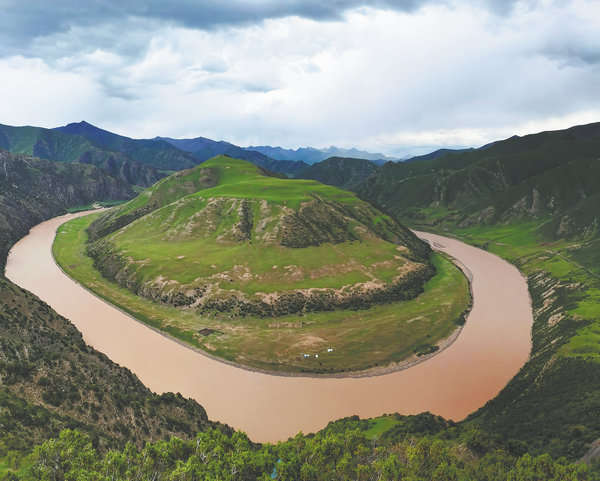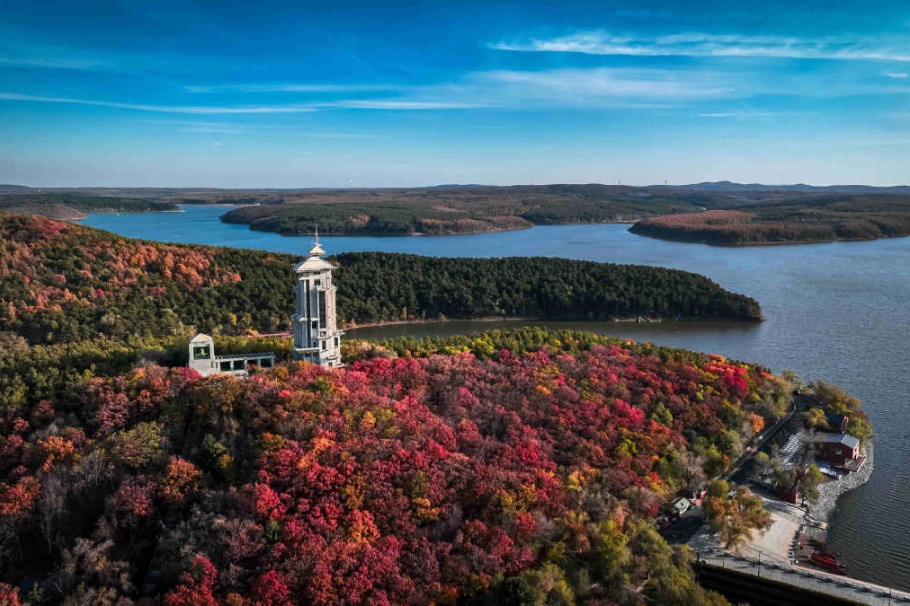A target with a natural outcome


Wider participation
In the 1980s, the population of Hainan gibbons dropped to as low as seven due to excessive hunting and lumbering. However, thanks to conservation efforts, the gibbon population in Hainan is currently estimated at 36, living in five family groups, according to the latest official figures.
Among the key measures implemented was ecological relocation in core protected areas.
Gaofeng village is located in the core area of Hainan national park. Villagers were relocated to a government-funded resettlement community, and each family was allocated a two-story house of 115 square meters. Later, the villagers became involved in the edible fungus industry, which helped increase their incomes.
Villager Fu Guohua says that his family has had easier access to education and medical services since moving to the new community, and their lives have improved a lot. He used to make a living by tapping rubber, earning up to 3,000 yuan ($443) a year. Now, he is in charge of a mushroom facility, with a regular monthly salary of 4,000 yuan.
The development of China's national parks, along with the improvement of the ecological environment and reduction in human activity, can also be seen in Sanjiangyuan National Park in Northwest China's Qinghai province.
The Sanjiangyuan area is known as Asia's "water tower" as it contains the headwaters of the Yangtze, Yellow and Lancang rivers. Madoi county in Qinghai's Golog Tibetan autonomous prefecture, where the source region of the Yellow River is located, is a fine example of national park construction.
From the 1960s to the '80s, Madoi's main industry was animal husbandry. At that time, each household in the county possessed hundreds of cattle and sheep, and the development of animal husbandry had boosted the local economy.
However, from the late '80s to the beginning of this century, due to various factors, the wetlands and lakes in Madoi decreased, grassland vegetation degraded, the water conservation capacity dropped sharply and biodiversity was affected.
To restore the ecological environment, the county government implemented a series of measures, including initiating ecological migration programs, imposing a grazing ban in certain areas, and encouraging local herders to participate in ecological protection. The measures have proved effective, reversing the trend of deterioration in the local ecology.
In addition to these government efforts, institutes, grassroots workers and locals also play a role in the ecological conservation of Sanjiangyuan.
Jamwang Phuntsog works at the public security bureau of Zhidoi county, Qinghai's Yushu Tibetan autonomous prefecture, through which the Yangtze River flows. In 2010, he set up an environmental protection volunteer team to pick up garbage in Sanjiangyuan during his spare time, together with volunteers from other professions.
The Shan Shui Conservation Center, an organization focused on nature conservation, cooperated with herder cooperatives to organize snow leopard observation in the source region of the Lancang River. This has not only increased the incomes of the herders, but also boosted ecological protection.
The success of China's national parks thus far has been in large part due to efforts involving local communities in the protection of wildlife and habitats. The completion of the national parks project by 2035 will see a massive expansion of such community involvement, according to analysts.

































